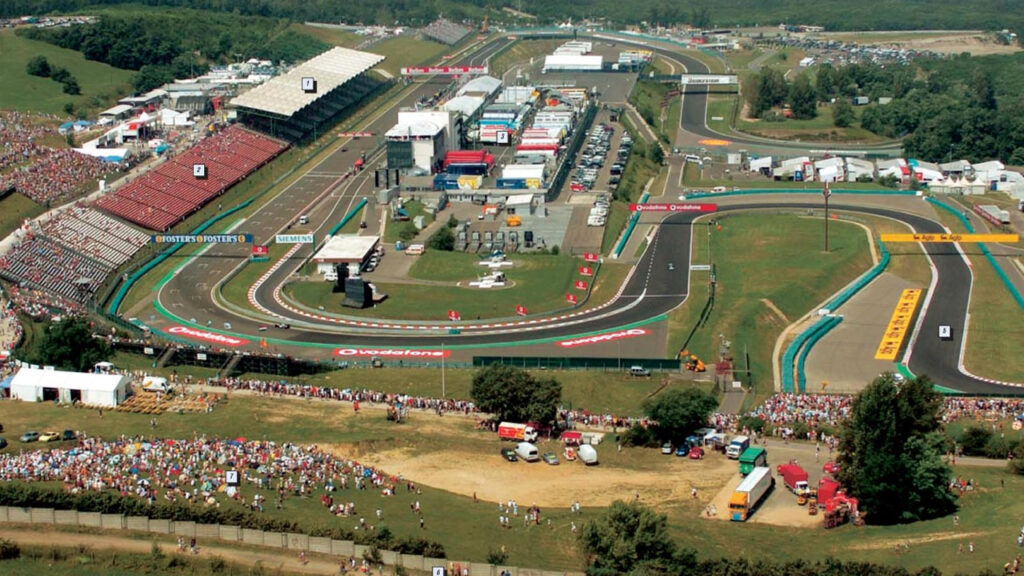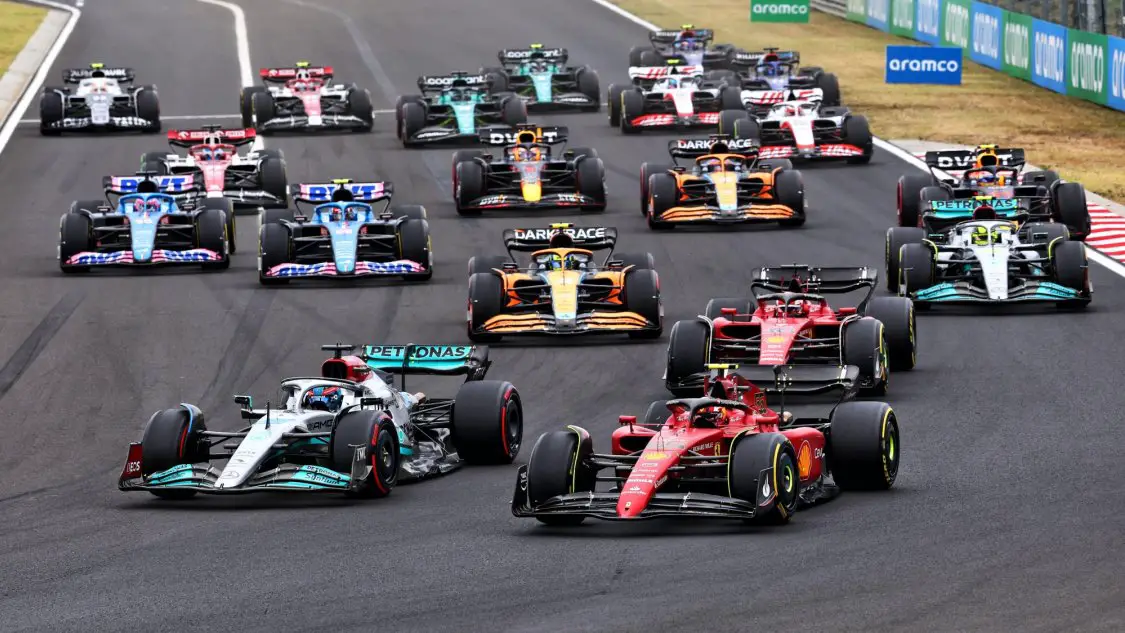The Hungarian GP is held at the famous Hungaroring. It is a challenging and unique track that tests the drivers and teams with its tight corners, low grip and high temperatures.
The Hungaroring is located in Mogyoród, about 20 kilometers from the capital city of Budapest. John Hugenholtz who also designed Zandvoort and Suzuka, created the circuit. It features 14 corners and a length of 4.381 kilometers.
In this article, we will look at the layout of the Hungaroring and what to expect from the 2023 Hungarian Grand Prix.
The Hungarian GP is a Track That Rewards Precision
The Hungaroring is a track that rewards precision, consistency and strategy. The drivers have to find the right rhythm and avoid mistakes. Teams have to find the optimal setup and tire management.
The race is usually held in hot and dry conditions. This adds to the physical and mental challenge for the drivers. Rain can also play a role, as it did in 2006 and 2011. Jenson Button and Lewis Hamilton won in wet-dry races.
The Hungarian Grand Prix is a race that often produces surprises and drama. It showcases the skill and talent of the drivers. It is a race that has a rich history and a loyal fan base. This is especially true among Finns who flock to support their heroes.
It is a race that deserves its place among the classics of Formula 1.
The Hungarian GP Is Held in a Valley
The Hungaroring is set in a valley, which allows spectators to see most of the action from certain spots in the grandstands. The track is also surrounded by hills, which create a natural amphitheater effect and amplify the sound of the engines.
The layout of the Hungaroring is often compared to a go-kart track, as it has many slow and medium-speed corners that require good traction and handling. The track is also very narrow and dusty, making overtaking difficult and mistakes costly.
The track has been modified slightly over the years to improve safety and racing quality, but it has retained its original character and charm.
Corner by Corner Description of the Hungaroring

The Hungaroring is a 4.381 km long circuit located in Mogyoród, Hungary.
The Hungarian GP has 14 turns and is known for its tight and twisty nature. The circuit is one of the slowest on the calendar (top speed that is reached is +- 295km/h).
As a result, it requires a lot of downforces `to navigate the corners.
Hungaroring Turn 1
When the lights go out for the Hungarian GP the cars accelerate away for the first corner where the F1 drivers have to brake heavily into a right-hand hairpin bend.
The drivers need to brake hard and downshift to first gear before turning in. They exit the corner at just over 130km/h and then. race down to turn 2.
The Hungarian GP Turn 2

The exit of the corner is crucial as it leads onto the short straight before the next corner.
The Hungarian GP Turn 3
The third corner of the Hungarian GP is a left-hand turn that requires the drivers to carry as much speed as possible through it. The apex of the corner is blind, which makes it difficult for the drivers to judge their entry speed.
Hungaroring Turn 4
The fourth corner of the Hungarian GP is a gentle right-hander that leads onto another short straight. The drivers need to brake hard and downshift to second gear before turning in. Drives accelerate away as soon as they can hitting speeds of +-220km/h on the exit.
The Hungarian GP Turn 5
The fifth corner is a gentle left hander at the end of a long straight where the drivers have to brake from. over 240km/h down to 200km.h. They have to carry as much speed as possible through it.
The apex of the corner is blind, which makes it difficult for the drivers to judge their entry speed.
The F1 drivers pass through the 1st DRS zone just before turn 6,
Hungaroring Turn 6
Driver’s approach the turn 6 at over 240km/h, brake hard down to 140km/h. The drivers need to brake hard and downshift to second gear before turning in through the right-hand turn.
The Hungarian GP Turn 7
The seventh corner is a continuation of the right-hand turn that follows directly on from turn 6. It leads onto another short straight and accelerate back up to 240 km/h.
The apex of the corner is blind, which makes it difficult for the drivers to judge their entry speed.
Hungaroring Turn 8
The eighth corner is a sharp at the end of a short straight. The drivers need to brake hard down to +-100km/h and downshift to second gear before turning into the right hander.
The Hungarian GP Turn 9
The ninth corner is a left-hand turn that requires the drivers to carry as much speed as possible through it. The apex of the corner is blind, which makes it difficult for the drivers to judge their entry speed.
The drivers need to brake hard and downshift to second gear before turning in. The cars exit this corner at +-140km/h and accelerate into the short straight that follows.
Hungaroring Turn 10
The tenth corner is a left-hand turn that requires the drivers to carry as much speed as possible through it. The apex of the corner is blind, which makes it difficult for the drivers to judge their entry speed.
The Hungarian GP Turn 11
The eleventh corner is a right-hand turn that leads onto another short straight. The drivers need to brake hard and downshift to second gear and reduce speed to +-150km/h before turning in.
Hungaroring Turn 12
The twelfth corner is a left-hand turn that requires the drivers to carry as much speed as possible through it (+-170km.h). The apex of the corner is blind, which makes it difficult for the drivers to judge their entry speed.
Hungaroring Turn 13
The thirteenth corner is a right-hand turn that leads onto another short straight. The drivers need to brake hard and downshift to second gear before turning in.
Hungaroring Turn 14
The fourteenth and final corner is a left-hand hairpin that leads onto the start-finish straight. The drivers need to brake hard and downshift to first gear before turning in.
The second DRS zone is passed just before turn 14.
It leads onto the longest straight where cars reach speeds of over 290km/h.
The G Forces Drivers are Subjected to at the Hungarian GP
The Hungaroring may be one of the slowest circuits on the calendar, but it still subjects F1 drivers to high G-forces throughout its tight corners. According to an article on Formula1.com, “the Hungaroring has an average lateral load of around 4g.”
This means that over half of its corners are taken at more than four times gravity.” This means that F1 drivers have to be physically fit and mentally sharp in order to navigate this challenging circuit.

